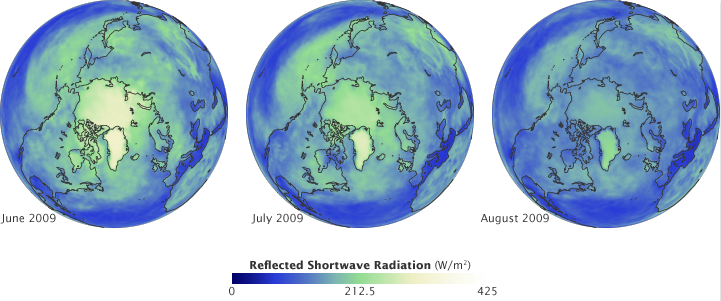
a surface with snow (CoCoRaHS, 2011)
The energy flux within the Arctic land surface is a function of the quantity and quality of snow cover (Figure 1). Low snow cover enhances temperature trends through a positive feedback mechanism involving surface reflectance. Warmer temperatures lead to less snowfall and reduced snow cover extent. A snow-free surface (albedo ~0.2) is relatively dark and has a lower surface reflectance than a bright snow-covered surface, so more solar energy is absorbed, contributing to faster melt and warmer air temperatures. The positive feedback mechanism is strongest in the spring over higher latitudes when incoming solar radiation to the snowpack is highest. This contributes to the observed rapid decreases in spring snow cover seen over the Arctic in recent decades (Screen and Simmonds, 2011; Kim et al., 2015) and exerts a measurable impact on the earth's heat balance (Groisman et al., 1994; Flanner et al., 2011). In contrast, densely snow covered surfaces have high albedos (up to 0.8-0.9) and a higher surface reflectance. In this case, very little solar radiation is absorbed, cooling the environment through a negative feedback mechanism. The negative feedback mechanism is strongest in the winter over higher latitudes when incoming solar radiation to the snowpack is lowest (Dery and Brown, 2007; Screen and Simmonds, 2011).
Surface albedo, and thereby reflectance of shortwave radiation decreases seasonally (Figure 2) as snow cover diminishes with rising temperatures.

References
Snow Links
Material for this page was provided by Ross D. Brown, Climate Processes Section, Climate Research Division, Science and Technology Branch, Environment Canada, Ouranos and edited by Maren Pauly and Tristan Mills, Department of Geography, University of Waterloo.
